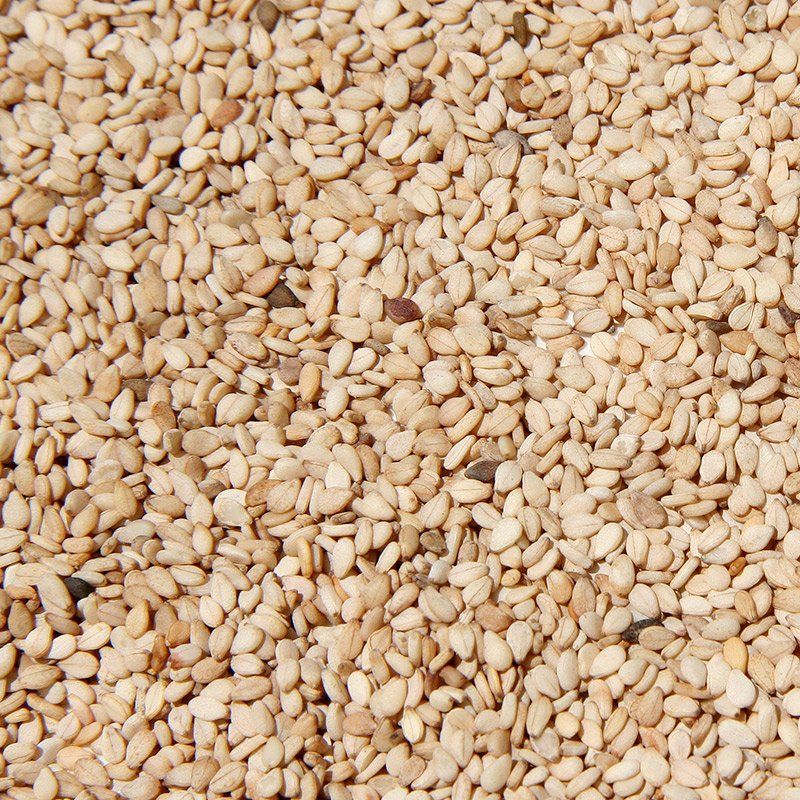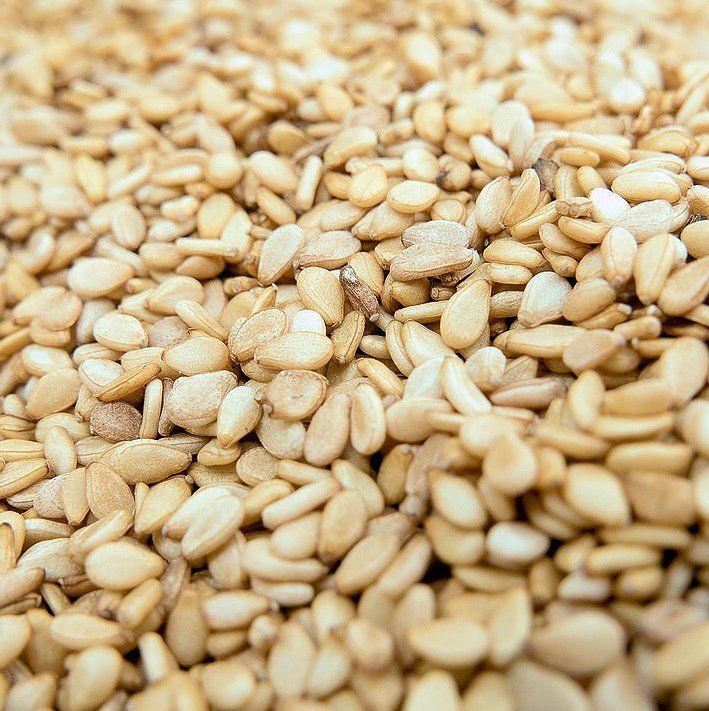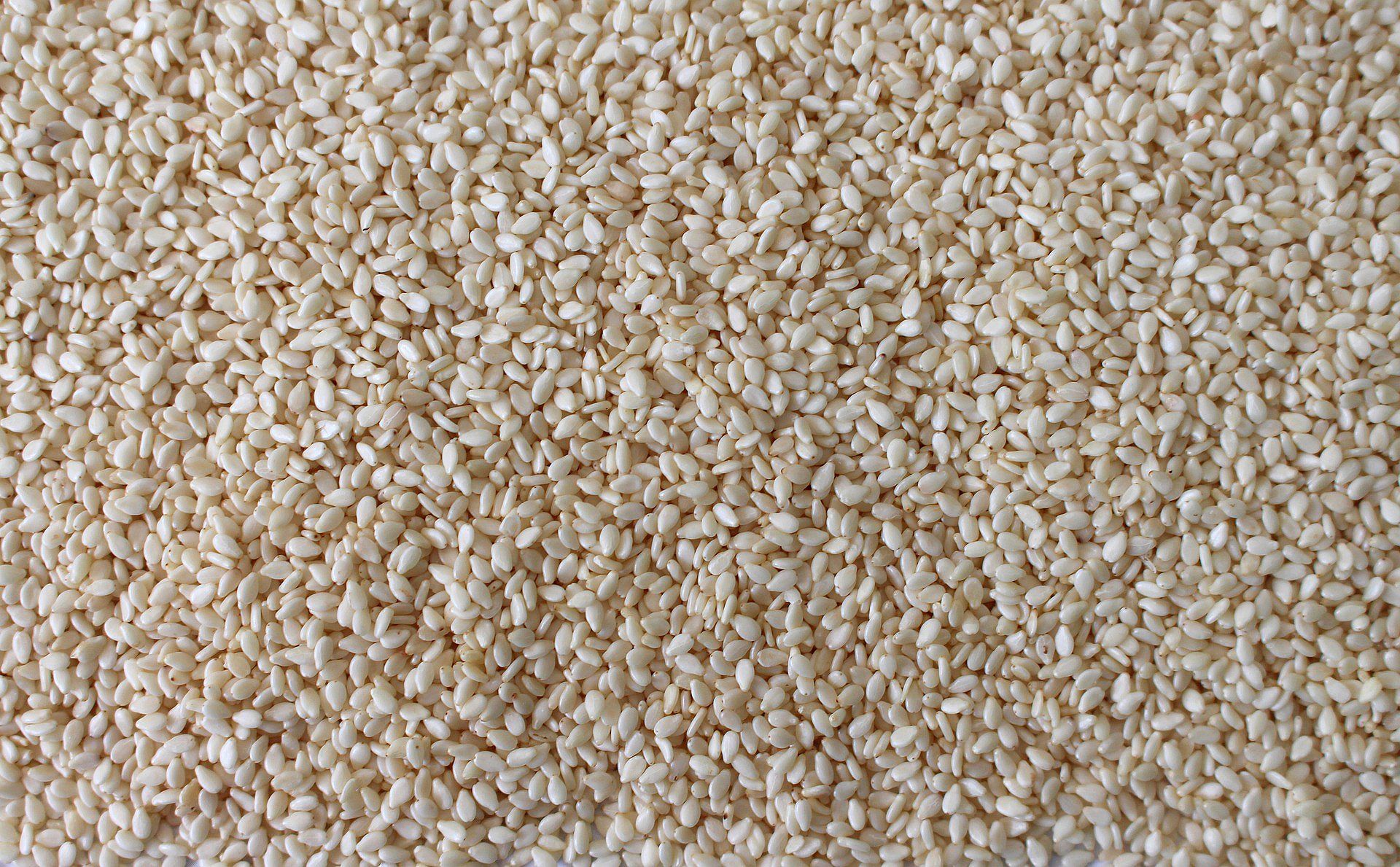Natural Sesame seeds
Specification
Introduction
World production of sesame seeds has reached 7 million metric tons in 2020. The white and other lighter-colored sesame seeds are common in Europe, the Americas, West Asia, and the Indian subcontinent. The black and darker-colored sesame seeds are mostly produced in China and Southeast Asia.
Sesame seeds have high nutrition value. In a 100 g amount, dried whole sesame seeds provide 573 calories. A typical serving would be a tablespoon, so nutrient content and percent Daily Value per serving would be approximately one-tenth of what is shown in the table. The byproduct that remains after oil extraction from sesame seeds, also called sesame oil meal, is rich in protein and is used as feed for poultry and livestock. A meta-analysis showed that sesame consumption produced small reductions in both systolic and diastolic blood pressure. Sesame oil studies reported a reduction of oxidative stress markers and lipid peroxidation.
Sesame seed is a common ingredient in various cuisines. It is used whole in cooking for its rich, nutty flavor. Sesame seeds are sometimes added to bread, including bagels and the tops of hamburger buns. They may be baked into crackers, often in the form of sticks. In Sicily and France, the seeds are eaten on bread. In Greece, the seeds are also used in cakes.
Sesame seeds are believed to have been brought into 17th-century colonial America. The entirety of the sesame plant was used extensively in West African cuisine. The seeds were commonly used as a thickener in soups and puddings, or could be roasted and infused in water to produce a coffee-like drink. Sesame oil made from the seeds could be used as a substitute for butter, finding use as a shortening for making cakes. Moreover, the leaves on mature plants, which are rich in mucilage, can be used as a laxative as well as a treatment for dysentery and cholera. After arriving in North America, the plant was grown by slaves to serve as a subsistence staple as a nutritional supplement to their weekly rations. Since then, they have become part of various American cuisines.
In Caribbean cuisine, sugar and white sesame seeds are combined into a bar resembling peanut brittle and sold in stores and street corners, like Bahamian Benny cakes.
In Asia, sesame seeds are sprinkled onto some sushi-style foods. In Japan, whole seeds are found in many salads and baked snacks. The sesame seeds are roasted and used to make different kinds of foods. East Asian cuisines, such as Chinese cuisine, use sesame seeds and oil in some dishes, such as dim sum, sesame seed balls, and the Vietnamese. Sesame flavor is also used to marinate meat and vegetables. Chefs in tempura restaurants blend sesame and cottonseed oil for deep-frying.







